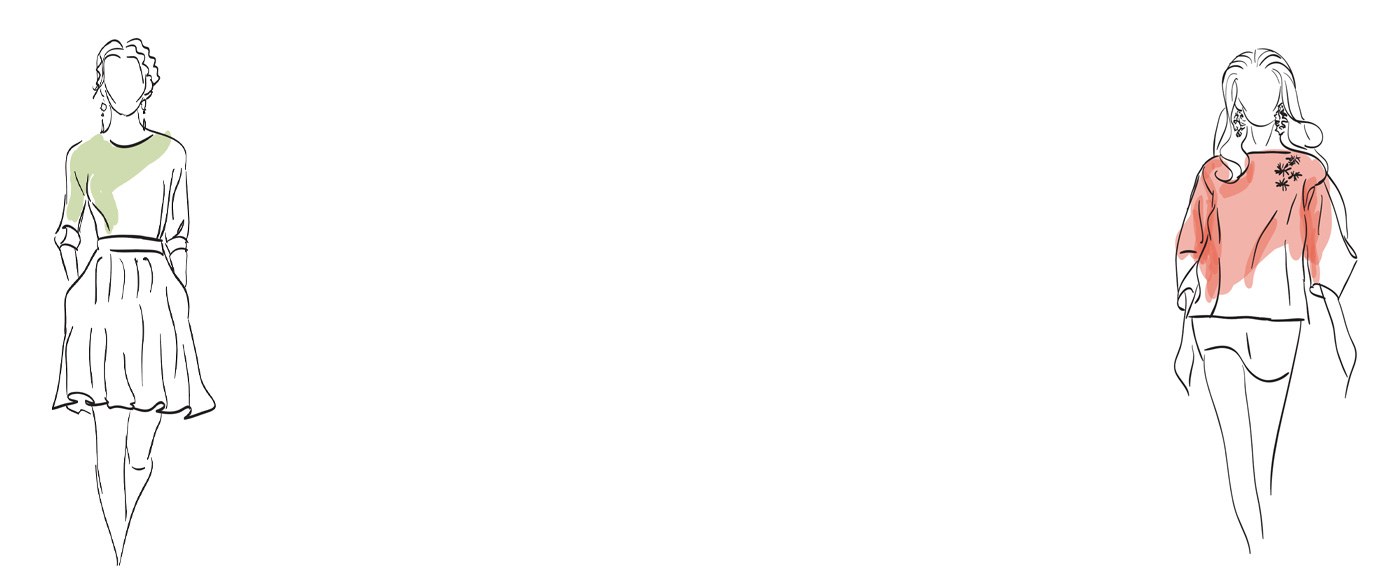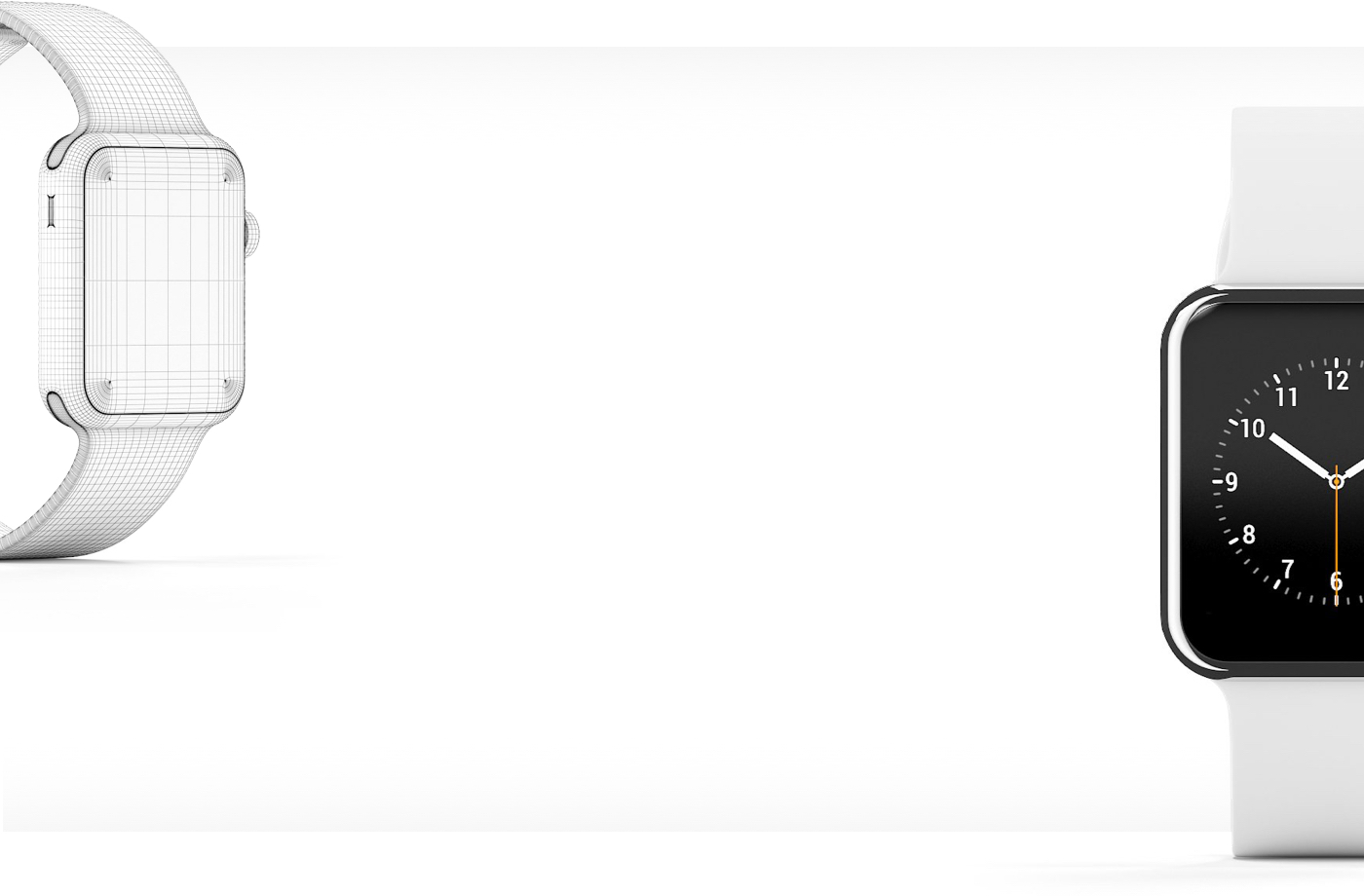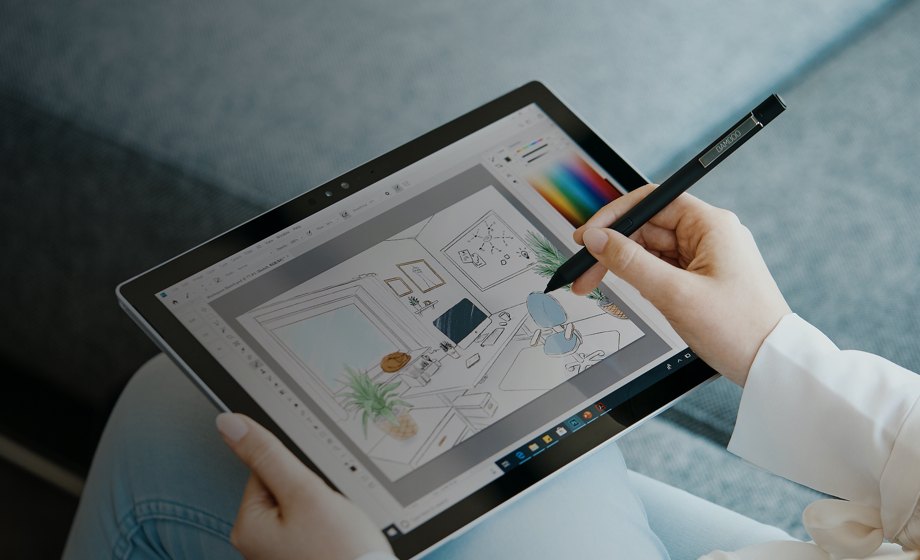Pen tablets
Esboza, dibuja y edita imágenes usando una tableta con gran capacidad de respuesta y un lápiz preciso, y observa cómo tus creaciones aparecen en pantalla.


Convertir la pasión por el diseño en una carrera profesional puede resultar abrumador, sobre todo teniendo en cuenta lo competitivo que es el mercado laboral. Pero expresarse de forma creativa con profesionales de ideas afines es una posibilidad digna de exploración. Tanto si eres un diseñador de moda en ciernes como si tienes buen ojo para los interiores o el 3D es tu pasión, sigue leyendo y te diremos cómo emprender tu carrera en el mundo del diseño partiendo con ventaja.

Ya se trate de diseñar páginas impresionantes para revistas como de crear anuncios visualmente impactantes para grandes marcas, el diseño gráfico es uno de los trabajos creativos más fascinantes que existen. Y, por lo tanto, uno de los de más difícil acceso. Pero no te desanimes: ¡deja que tu talento salga a relucir!
La cualificación es imprescindible, pero eso no implica necesariamente cursar un grado de varios años. Las alternativas intensivas y de corta duración te pondrán al día y garantizarán tu preparación laboral en tan solo tres meses en algunos casos. Estos breves cursos en línea te inculcarán los principios del diseño y los fundamentos del software.
Es imprescindible que crees una cartera de dibujos en línea, incluyendo tu propio logotipo. También merece la pena buscar causas benéficas donde puedas perfeccionar tu destreza y construir un conjunto de obras que puedas mostrar a posibles empleadores.
Con una cartera de dibujos y una cualificación en tu posesión, el siguiente paso consiste en buscar una valiosa experiencia laboral. Las principales agencias creativas y de diseño ofrecen programas de prácticas, pero también conviene hablar con empresas más pequeñas para ver si están dispuestas a ofrecerte una valiosa experiencia en primera línea y ayudarte a mejorar.

Tanto si sueñas con hacer prendas de alta costura para una casa de moda de lujo como si te apasiona la ropa deportiva, hacerse con un hueco en este campo suele requerir estudios formales antes de conseguir un trabajo. Existe la opción de estudiar cursos más cortos, de un año de duración, donde se imparten las aptitudes fundamentales. O bien puedes emprender una carrera más larga con el objetivo de adentrarte en el mercado laboral.
Aunque los estudios te proporcionarán una base sólida, lo que te ayudará a conseguir un empleo será la forma en que te proyectes a ti mismo y a tu obra. Los programas de prácticas son la vía más común para acceder a un trabajo a jornada completa, incluso después de haber hecho una carrera, pero para destacar asegúrate de complementar tu cartera de dibujos con diseños e ideas relevantes para la empresa con la que quieres trabajar. Las grandes marcas ofrecen prácticas, pero las empresas pequeñas también brindan la posibilidad de aprender desde dentro. En LinkedIn encontrarás un buen número de puestos que no requieren experiencia previa.
Procura conocer a fondo el mercado y dónde crees que se venderán tus diseños en el futuro: el negocio de la moda es tan importante para los diseñadores como la propia indumentaria. Y si te gusta la obra de cierto diseñador, ponte en contacto con esa persona para solicitar una reunión. El contacto cara a cara, o incluso una llamada telefónica, añade un toque personal que puede conducir a un puesto que quizá no se haya anunciado.

El diseño de productos consiste tanto en resolver problemas como en diseñar los productos en sí. Y eso significa aprender sobre materiales e ingeniería, así como desarrollar tu práctica creativa. Afortunadamente, existen diferentes vías para acceder al diseño de productos, dependiendo de tus preferencias personales, con programas de aprendizaje o cursos universitarios.
Estos últimos pueden combinarse a menudo con un año de prácticas, lo cual te ofrece la oportunidad de trabajar junto a diseñadores codo con codo, aprendiendo cómo sacan los conceptos de la página y los convierten en productos tangibles, además de familiarizarte con el software y los productos que se utilizan a diario en el estudio.
Al igual que en otras partes del sector creativo, las prácticas cumplen un valioso papel a la hora de efectuar la transición de estudiante aplicado a empleado. Las agencias suelen animar a los licenciados a ponerse en contacto con ellas para explicarles por qué deberían tener la oportunidad de hacer prácticas o trabajar con ellas.
Para tener las mayores probabilidades de éxito, crea un sitio web de cartera de dibujos sencillo que muestre los proyectos y cómo ha sido tu labor, desde la explicación del concepto y los primeros dibujos hasta el artículo terminado. Esto demuestra que comprendes el proceso que subyace tras el diseño del producto, en lugar de limitarte a mostrar un producto o un diseño una vez hecho. Asegúrate de que cualquier sitio web tenga una sección "Acerca de mí", detallando el software y hardware que sabes utilizar.

¿Te interesa el panorama general más que los detalles? Entonces un trabajo de diseño conceptual podría ser lo que buscas. El diseño conceptual consiste en soñar a lo grande y desarrollar un diseño durante sus fases iniciales: la moneda de cambio son las ideas, más que la simple presentación de un producto.
Los diseñadores conceptuales trabajan en grandes campañas publicitarias, apps o dispositivos, creando conceptos que muestran las marcas y productos bajo una luz nueva e interesante. Se trata de un trabajo avanzado, por lo que deberás sobresalir entre la multitud: cursar un Máster en Diseño Conceptual reforzará tus posibilidades en un mercado laboral competitivo. También puedes especializarte en agencias de diseño gráfico o de productos, trabajando estrechamente con diseñadores conceptuales para pulir tu destreza.
El diseño conceptual tiene mucho que ver con el pensamiento lateral, con la creación de algo audaz que la gente puede no haber considerado nunca antes en relación con una marca concreta, así que procura crear un trabajo original y único que destaque sobre el resto. Deja claro a los posibles empleadores que entiendes los fundamentos del diseño asistido por computadora (CAD) y posees experiencia con el hardware, como el nuestro, que facilita la vida de los diseñadores conceptuales.

La ilustración ofrece increíbles oportunidades de expresión creativa, con la posibilidad de dibujar luciendo tu propio estilo para revistas, sitios web, libros y clientes comerciales. Naturalmente, requiere mucho esfuerzo, ya que no hay una ruta fija para entrar en un sector bien conocido por su dificultad para abrirse camino, sobre todo porque muchos ilustradores trabajan por cuenta propia.
Aunque es posible cursar un título de Ilustración, si tienes pasión por el dibujo y un buen ojo para los detalles es posible crear tu propia presencia y conseguir encargos. En primer lugar, asegúrate de que tus redes sociales, especialmente Instagram, muestren tu mejor obra. Ten una cuenta separada para las imágenes personales: así los clientes podrán ver tu obra sin tener que rebuscar entre selfis y fotos de vacaciones. Las redes sociales también son una forma estupenda de relacionarse con otros ilustradores: empezar a interactuar podría llevarte a tu primer encargo.
Crea un sitio web de cartera de dibujos, asegurándote de tener un buen nombre de dominio y una dirección de correo electrónico profesional, en lugar de una cuenta genérica. Aprende a manejar las herramientas de ilustración digital, así como a dibujar con lápiz y papel. Y cuando te sientas seguro, ponte en contacto con editoriales y agencias creativas cuyo trabajo te guste, solicitando una reunión. Muchos ilustradores autónomos tienen un agente que les ayuda a conseguir trabajo.

El modelado 3D es uno de los aspectos más fascinantes y de más rápida evolución del diseño. Para labrarse una carrera en este ámbito es necesario dedicar tiempo a aprender habilidades muy especializadas, algo que puede hacerse en los cursos de grado y posgrado de Modelado 3D de las escuelas de arte y las universidades. Sin embargo, los cursos intensivos en línea también pueden ponerte al día rápidamente. Practicar con herramientas de código abierto y con hardware dedicado, como trackpads y lápices digitales en una potente computadora de sobremesa, también te ayudará a mejorar más rápidamente.
Una vez que hayas dominado tus herramientas, hay un sinfín de opciones profesionales: puedes buscar oportunidades laborales en el campo de las películas en 3D, crear modelos para la investigación científica o desarrollar creaciones futuristas para juegos. Los que trabajan en el sector aconsejan adoptar un enfoque amplio, en lugar de especializarse, sobre todo si piensas trabajar como autónomo. Esto te dará más opciones a la hora de conseguir empleo.
Las ofertas laborales se pueden encontrar mediante una búsqueda rápida en la web. Por otra parte, muchas agencias creativas suelen tener equipos especializados en 3D: asegúrate de tener un sitio web de calidad profesional para mostrar tus modelos. Sin careces de él, los posibles empleadores no podrán ver tus creaciones y probablemente buscarán en otra parte.

El diseño de interiores es mucho más que la decoración: esta amplia disciplina puede abarcar desde la creación de espacios de trabajo corporativos hasta el diseño de espacios para clientes con necesidades específicas de movilidad.
Un título en Diseño de Interiores es imprescindible para quienes quieran trabajar para una agencia, al igual que desarrollar habilidades de dibujo, especialmente en computadoras de sobremesa y tabletas. También es fundamental dominar el diseño asistido por computadora (CAD). Cualquier curso te instruirá sobre cómo se experimenta el espacio por parte de grupos y personas, además de ayudarte a trabajar en tu propia estética e identidad.
Las prácticas son una forma segura de ganar experiencia rápidamente. Los ofertas de trabajo son muy accesibles, mientras que las agencias de renombre suelen anunciarse: asegúrate de tener bien lista tu cartera de dibujos en línea y de llevar dibujos físicos a cualquier entrevista.
Trabajar como autónomo también es una vía clave hacia el diseño de interiores, aunque vale la pena tener algo de experiencia en el seno de una empresa antes de lanzarte por tu cuenta. Los proyectos para organizaciones benéficas son una buena forma de reforzar tu cartera de dibujos, aunque, al igual que con todos los trabajos altruistas, merece la pena establecer unas condiciones estrictas antes de empezar, para procurar no pasar demasiado tiempo trabajando gratis.
No importa qué tipo de carrera de diseño quieras emprender: Wacom Intuos Pro puede ayudar a que tu obra destaque entre la multitud. En combinación con el ultrasensible lápiz Wacom Pro Pen 2, esta elegante tableta de dibujo tiene un aspecto y una sensación formidables. Dale vida a tu imaginación con el control creativo más natural hasta la fecha. Wacom Intuos Pro tiene todo lo que necesitas para un diseño que exige atención.
Producto recomendado

Wacom Intuos Pro
Esboza, dibuja y edita imágenes usando una tableta con gran capacidad de respuesta y un lápiz preciso, y observa cómo tus creaciones aparecen en pantalla.

Esboza, dibuja y edita imágenes usando una tableta con gran capacidad de respuesta y un lápiz preciso, y observa cómo tus creaciones aparecen en pantalla.

Dibuja, diseña y crea directamente en una pantalla de alta resolución con un lápiz preciso.


Escribe y anota rápidamente ideas en tu dispositivo móvil con un lápiz digital Wacom.
La estrategia de Wacom consiste en acercar la tecnología a las personas mediante su tecnología de interfaz que hace que la experiencia al usarlo se sienta natural. Esto ha convertido a Wacom en el fabricante líder a escala internacional de pen tablets y pantallas interactivas, así como de lápices digitales y soluciones para guardar y procesar firmas digitales. La tecnología avanzada de los dispositivos Wacom es Intuitiva y se ha utilizado en la creación de algunas de las películas, efectos especiales, moda, diseños y obras de arte digitales más interesantes del mundo, y ofrece a los usuarios domésticos y profesionales una tecnología de interfaz líder para expresar su propia personalidad. Fundada en 1983, Wacom es una compañía global con sede en Japón (bolsa de valores de Tokio: 6727), con filiales y sucursales en todo el mundo para cubrir operaciones de marketing y distribución en más de 150 países.